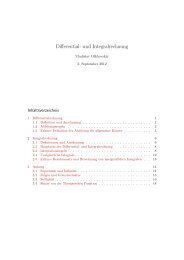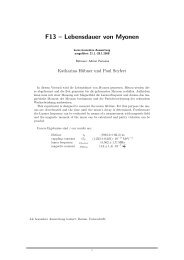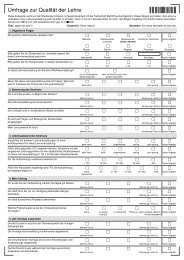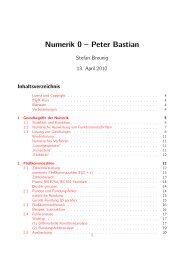Extrasolar Moons as Gravitational Microlenses Christine Liebig
Extrasolar Moons as Gravitational Microlenses Christine Liebig
Extrasolar Moons as Gravitational Microlenses Christine Liebig
Create successful ePaper yourself
Turn your PDF publications into a flip-book with our unique Google optimized e-Paper software.
Chapter 4<br />
Choice of Scenarios<br />
This chapter presents the <strong>as</strong>sumptions that we used for our simulations. We open<br />
with a detailed discussion of the <strong>as</strong>trophysical parameter space that is available<br />
for simulations of a microlensing system consisting of star, planet and moon. We<br />
separate the parameters into those that are relevant for the creation of magnification<br />
patterns (section 4.1), and those necessary for the physical interpretation of the<br />
microlensing light curves (section 4.2). By choosing the most probable or in some<br />
other way most re<strong>as</strong>onable value for each of the parameters (the re<strong>as</strong>ons for our<br />
choices are explained within the first two sections of this chapter), we create a<br />
standard scenario (section 4.3) that all other parameters are weighted against during<br />
the analysis.<br />
host star<br />
qP S = MPlanet<br />
MStar<br />
dP S<br />
qMP = MMoon<br />
MPlanet<br />
φ<br />
planet<br />
moon<br />
Figure 4.1: For creating the magnification maps, five parameters have to be fixed.<br />
They are the relative m<strong>as</strong>ses qP S and qMP <strong>as</strong> well <strong>as</strong> the angular separations in the<br />
lens plane dP S and dMP and the position angle of the moon φ. These parameters<br />
determine the relative projected positions of the three bodies.<br />
4.1 Parameters Relevant for Magnification Patterns<br />
There are five parameters describing the lens configuration (see figure 4.1). They<br />
are the m<strong>as</strong>s ratios qP S = MPlanet<br />
MStar and qMP = MMoon , then the angular separations<br />
MPlanet<br />
31<br />
dMP










